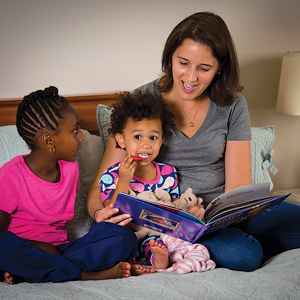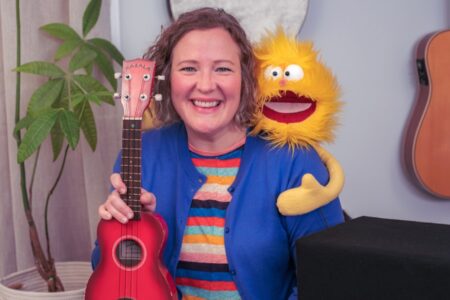Ask parents when to transition a toddler from a crib to a bed, and you’ll hear the same thing again and again: “Keep him in the crib as long as you possibly can.”
My son, Gabriel, didn’t climb out of his crib until a few days before his third birthday.
My daughter, Clementine, adopted from Ethiopia at nearly two years old, slept without a crib in the rural Ethiopian village where she was born, but adapted to a crib as a toddler living in an orphanage. While it was tempting to transition Clementine to a bed when she arrived home, I wanted to keep things as normal as possible for her. So I assembled her brother’s old crib in her new room and didn’t take it down until a few months before her third birthday. Our family was set to spend several months living abroad, and I couldn’t imagine dragging a Pack ’n Play along on our adventures.
This is all to say that I didn’t see it coming when I put my 19-month-old daughter, Florence, down for a nap one afternoon, and a few minutes later, heard her pounding on the door of her bedroom with her small clenched fists, demanding a rescue.
I opened the door and the two of us eyed each other, my eyes wide with surprise, hers wet with tears.
“Florence, did you just climb out of your crib?” I asked.
“Yeah,” she answered, blubbering. I scooped her up and kissed her wet cheeks.
Like most mothers, I ignored the stack of parenting books that gather cobwebs in various corners of my home and took to my phone. First, I texted one of my close friends, “Florence just climbed out of her crib during naptime. Did you move your girls as soon as they started climbing out?”
Turns out, her girls were saints, not climbers. As she began to describe a complicated contraption her mother had devised to keep her twin brothers in their crib more than four decades prior, the severity of my newfound situation began to sink in. Had her mother ever slept again? Would I?
I watched the tiny response dots dance up and down at the bottom of the screen and hoped she was typing something genius.
“Ask on Facebook. I’m interested in the response.”
Not the advice I was hoping for, I took to the Internet, crafting the type of crowdsourcing status update that I generally despise.
“So… any consensus on what to do when your 19-month-old starts climbing out of her crib? Keep her in, move her to a big bed, rig something? Any and all advice accepted.”
The responses rolled in and I began to wade through my friends’ advice.
Let ’em keep climbing out.
One friend, Alissa, wrote, “My son started climbing out of his crib early, but only in the morning when it was time to get up. We had him show us how he did it and after determining that he knew what he was doing, we let him stay in the crib.”
The problem with this advice is that for every kid who looks like he knows what he’s doing, there are ten kids who haven’t a clue. Florence is no Houdini, just insanely flexible and with commendable upper body strength. Her breakout wasn’t a carefully plotted maneuver, more a case of an innate gymnastic sensibility coupled with dumb luck.
When my friend Jenny’s daughter, Audrey, began climbing out of her crib, at around two, Jenny was confident that Audrey knew what she was doing – until she and her husband caught the great escape on their video monitor. Audrey was using her belly to balance her weight on the crib’s sidebar, positioning her hands equidistant on the slats, and somersaulting to the floor. Jenny knew there was no letting her repeat that stunt.
Buy a net.
Over lunch, a friend named Lucy described a gizmo someone she knew had bought online. Something called a crib net could be zipped up overtop the crib, providing both a visual and a physical barrier to stymie breakouts.
A quick Google search confirmed that Lucy was right. For under ten bucks, I could buy a multipurpose net that acted as part mosquito barrier, part cat guard, part baby wrangler. But my search also pulled up a scary warning from the Consumer Products Safety Commission, advising parents that the nets had led to a number of “entrapment incidents.” I closed my browser window.
Put a mattress on the floor.
Lots of people recommended I move a mattress to the floor. The Montessori movement actually advocates children sleep on floor beds from as early as four months of age because it allows children to be at eye-level with their environment.
Some of my friends had placed their children’s crib mattresses on the floor; others had invested in full-sized mattresses, which they placed on the floor before they eventually bought bed frames. Proponents of the Montessori floor bed often recommend parents purchase a thinner mattress, so that kids have less far to fall in the event that they roll off the edge of the bed.
But even if I purchased an ultra-thin mattress, would giving Florence free reign of her bedroom turn bedtime into an all-night party?
Move to a toddler bed.
One step up (literally) from the floor bed is the toddler bed. Most toddler beds make use of the child’s crib mattress, repurposing it in a miniature bed frame with the benefit of a guardrail. Some cribs convert to toddler beds, but ours wasn’t one of them.
With the toddler bed, I had some of the same concerns I’d had with the floor bed. Wouldn’t Florence be up and down all night? I worried about her roaming the house while the rest of the family slept. My fourth-grade teacher commented, assuring me that if I flipped the lock on the bedroom door, I’d know exactly where she was at night.
Jump to a full-sized bed.
Not one, but two of my sorority sisters commented on my status, saying that they’d moved children nearly as young as Florence straight from a crib to a big bed. They’d opted to add guardrails, and had had zero problems.
I liked the idea of moving Florence to a full-sized bed for a few reasons, not the least of which was that we already owned one.
Where she landed…
“Whatever you do,” said my friend Jenny, “you can’t let her keep climbing out of the crib.”
Jenny was right. Most pediatricians now recommend that parents move children as soon as they think their kids are able to climb out on their own. Each year, 10,000 children visit ERs as the result of crib-related injuries, and one hundred of them die.
Late that same afternoon, I disassembled Florence’s crib and pushed her big sister Clementine’s full-sized bed against the wall. When I put Florence to bed that night, my plan was to try putting her in with Clementine who would act as a human guardrail. I had a hunch that Florence’s desire to please her big sister would outweigh any temptation to get out of bed at night.
By the time we were a week into the experiment, I knew we had made the right choice. Both girls were doing great. One night, after I’d kissed them both and closed the bedroom door, I heard Florence begin to fuss. I stood in the dark hallway and listened through the door as her big sister soothed, “It’s okay. I’ll hold your hand.”
I posted a photo of the two girls, snuggled in their bed, on Facebook. “Thanks for all the good advice,” I wrote to my community of friends.
One friend commented, “Looks like you found the perfect solution!” Another wrote, “I hope our girls want to share a bed some day. Right now they fight like cats.”
On that issue, I have no advice.







